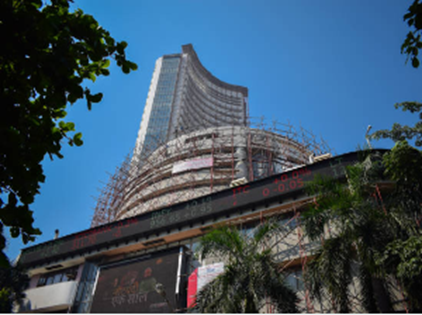The Indian stock market today is fast-paced, digital, and more accessible than ever. With just a smartphone and an internet connection, you can buy or sell shares in seconds. But it wasn’t always this easy. The journey from noisy trading floors to smooth mobile apps is a fascinating story of transformation—one that reflects not just the evolution of markets, but also of India’s financial landscape.
Humble Beginnings: The Birth of BSE
India’s stock market story began in the 19th century when a group of brokers would gather under a banyan tree in Mumbai to trade stocks. This informal setup eventually gave birth to the Bombay Stock Exchange (BSE) in 1875, making it Asia’s oldest stock exchange. Back then, the process was completely manual. Trades were recorded on paper, settlements took weeks, and the entire system lacked regulation.
Despite the limitations, BSE played a vital role in funding businesses during the pre-independence era and beyond. It laid the foundation for what would eventually become one of the world’s most active markets.

Enter NSE: A Game-Changer
The real turning point came in 1992, when the National Stock Exchange (NSE) was established. Launched in the aftermath of the Harshad Mehta scam, NSE was built with the goal of bringing transparency, efficiency, and electronic trading to the Indian market.
By introducing screen-based trading, NSE removed the need for physical presence on a trading floor. Orders were now placed digitally, making the market more accessible to a broader population. This shift also eliminated price manipulation and improved price discovery, thanks to real-time data.
Key Milestones That Shaped the Market
Several milestones marked the Indian market’s journey from traditional to modern:
- 1994: NSE launched electronic trading, revolutionizing the way Indians invested.
- 1996: The introduction of Demat accounts by NSDL changed the way shares were held—no more physical certificates, only electronic records.
- 1999–2000: The dot-com bubble introduced more Indians to stock investing but also reminded many about the volatility of markets.
- 2008: The global financial crisis tested investor confidence, but India showed relative resilience.
- 2020: The pandemic-led market crash was followed by a historic retail investor boom, driven by apps and rising financial literacy.
Rise of Technology and the Retail Investor
One of the most remarkable shifts in the last decade has been the rise of the retail investor—everyday people participating in markets, not just institutions. A big driver of this change? Technology.
With platforms like Zerodha, Groww, and Upstox, investing became as easy as ordering food online. Commission-free trading, user-friendly interfaces, educational content, and instant KYC have turned millions of Indians into first-time investors. Social media and finance influencers have also played a role in educating and guiding new investors, especially among the youth.
Another important development was the rise of mobile trading. Today, you don’t need to call a broker or sit in front of a desktop. All you need is an app to track your portfolio, analyze a stock, or place an order in real time.
Regulation and Reforms
While technology opened up the market, it was SEBI (Securities and Exchange Board of India) that ensured this evolution happened responsibly. SEBI introduced measures to protect investors, prevent fraud, and build confidence.
Some of the key reforms included shortening settlement cycles (now T+1), improving disclosure norms, making mutual fund investing simpler, and ensuring that brokerages follow strict compliance rules. Thanks to these efforts, trust in the market has grown—and participation has widened beyond metro cities.
Conclusion
From chaotic trading floors filled with shouting brokers to sleek apps that let you invest from anywhere, the Indian stock market has come a long way. What once seemed out of reach for the common person is now available at their fingertips. This transformation didn’t just modernize how we trade—it democratized who could trade.
In the next blog, we’ll take a closer look at key events and turning points that shaped the market’s path—big booms, busts, scams, and successes that influenced how investors think today.

 June 15, 2025
June 15, 2025